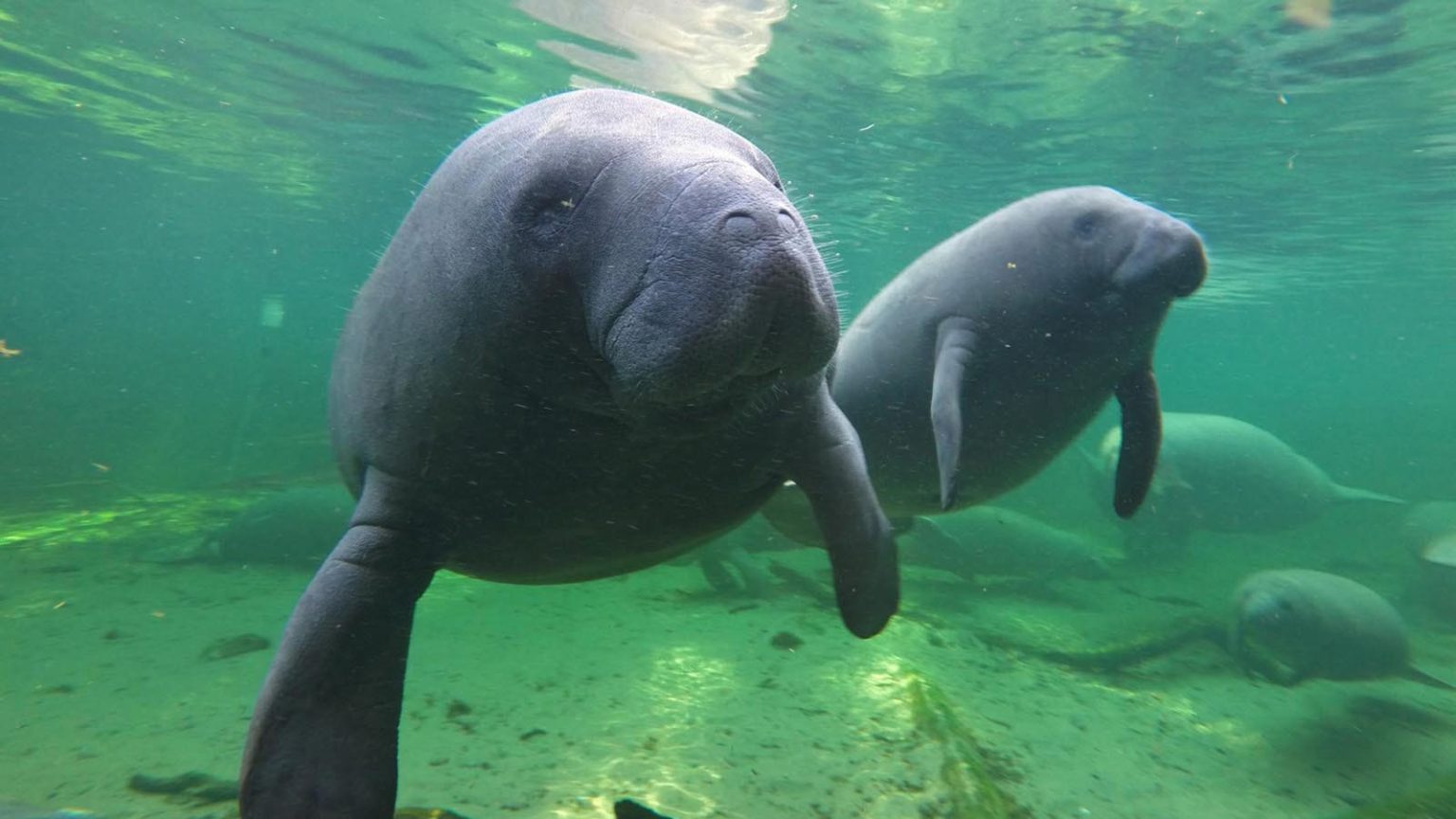How many manatees does it take to fill up a Florida state park? Try 932. That’s the astounding number that appeared at Blue Spring State Park in Orange City on the morning of January 21. It broke the park’s previous record of 736 from January 1.
The park announced the impressive manatee count on a Facebook page run by Friends of Blue Spring State Park, a citizen support organization. The group organizes volunteers and fundraisers for the park.
The winter-time mass gathering was fueled by the animals’ need to escape colder water. “Manatees depend on water generally warmer than 68 degrees Fahrenheit to survive the winter, so in the fall, they travel to Florida springs, power plant discharges and other warm-water sites,” the Florida Fish and Wildlife Conservation Commission said in an explainer. The water at Blue Spring stays around 72 degrees all year long.
The epic count was carried out by two park rangers making independent side-by-side observations from several viewing spots. Their numbers matched up. “Whether there’s five manatees or 900, it’s always thrilling to see them taking refuge in the spring run,” says park manager Dustin Allen. The manatee party has since calmed down with the park’s count coming in at 127 on Thursday.
The January 21 manatee meetup is even more special when considering the history of the mammals at the park. Blue Spring’s count was around 36 manatees in the 1970s when research began. Before 2024, the park’s record was 729 manatees in January 2023.
The gentle animals are also known as sea cows for their plant-grazing eating habits. The Florida manatee is a subspecies of the West Indian manatee, which is designated as vulnerable on the International Union for Conservation of Nature Red List of Threatened Species. The list catalogs the conservation status of species around the globe. Vulnerable is one step away from being classified as endangered.
Vessel strikes, habitat loss, unusually cold weather events and red tides are culprits in manatee deaths, according to the Marine Mammal Commission. Slow-moving manatees spend time near the surface in shallow waters, which exposes them to boat propellers. Florida has designated manatee protection zones where boat speeds are restricted and people are encouraged to keep an eye out for the animals.
Warm-water safe havens are important for manatee survival. FWC has been tracking an ongoing manatee mortality event along the East Coast that began in 2020. Poor water quality, algal blooms and seagrass loss in the Indian River Lagoon along the Atlantic coast have contributed to manatee deaths in that area. “Colder temperatures during the winter add extra health stressors to manatees that are already compromised by chronic malnutrition,” said FWC.
It can be hard to comprehend just how many large marine mammals and their calves amassed at Blue Spring on a single day. If we consider the average adult weight of a manatee at around 1,000 pounds, multiply it by the number of animals on hand and account for the youngsters, then that still works out to over 400 tons of manatees hanging out together. Oh, the huge manatee.
Read the full article here





